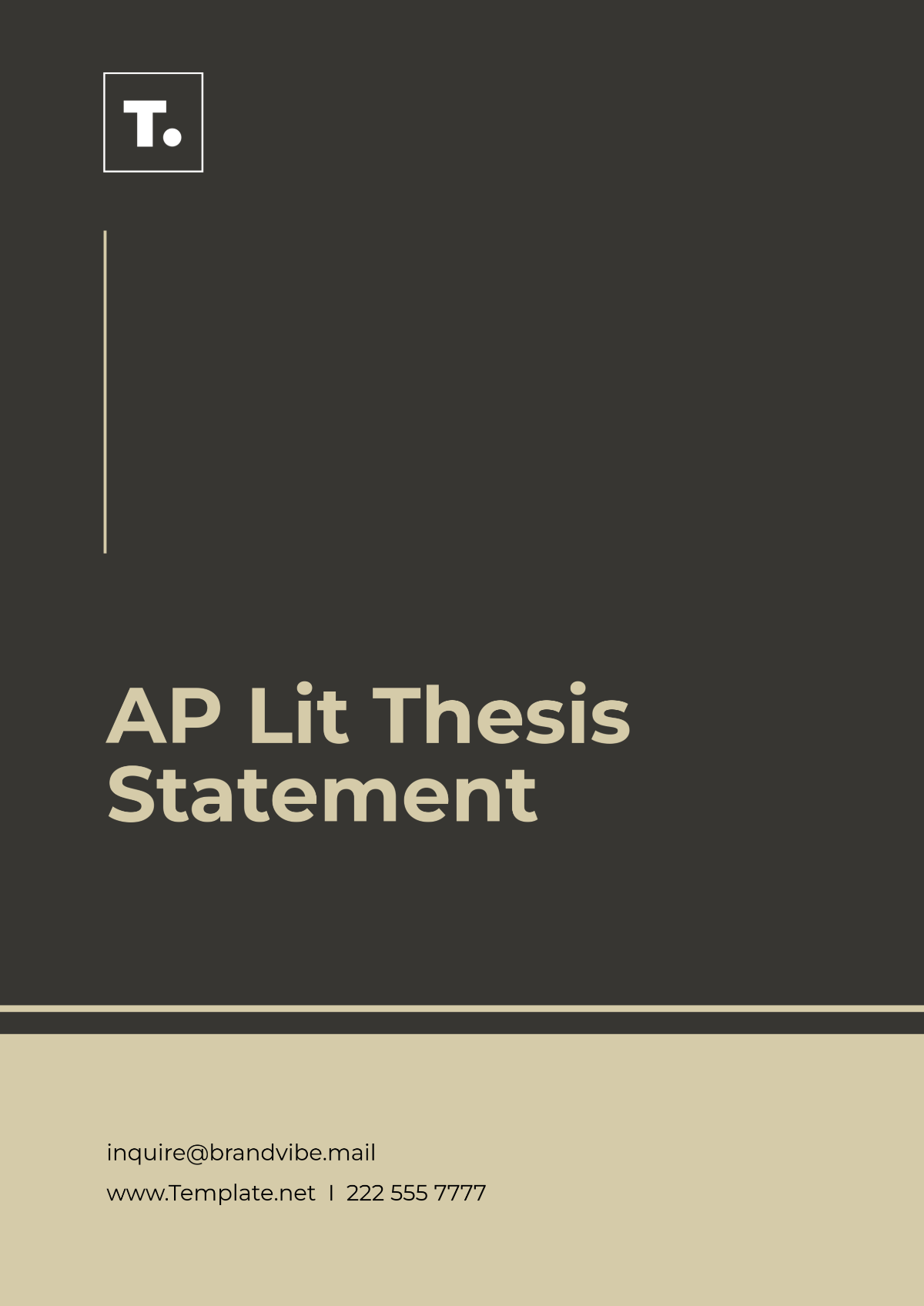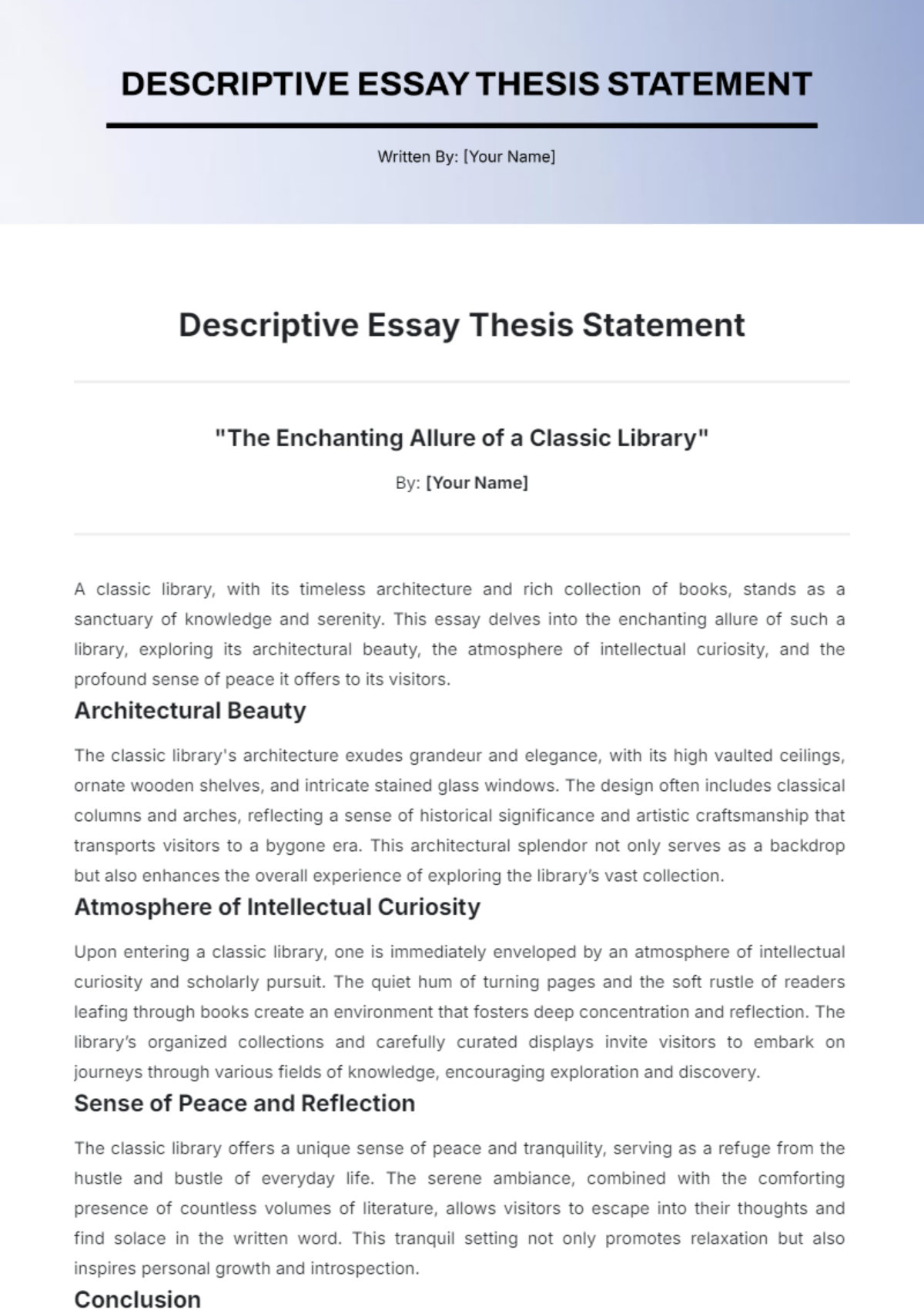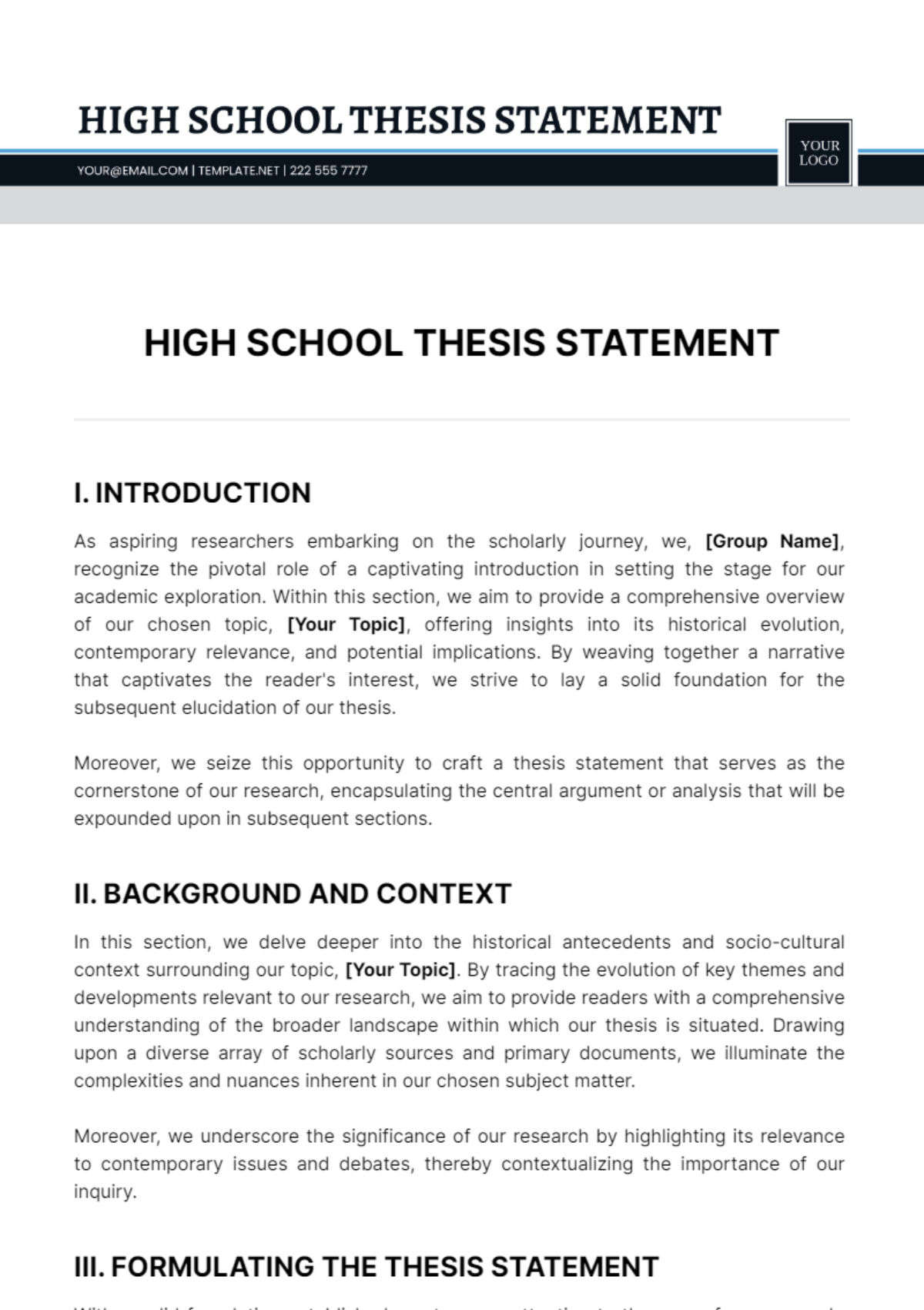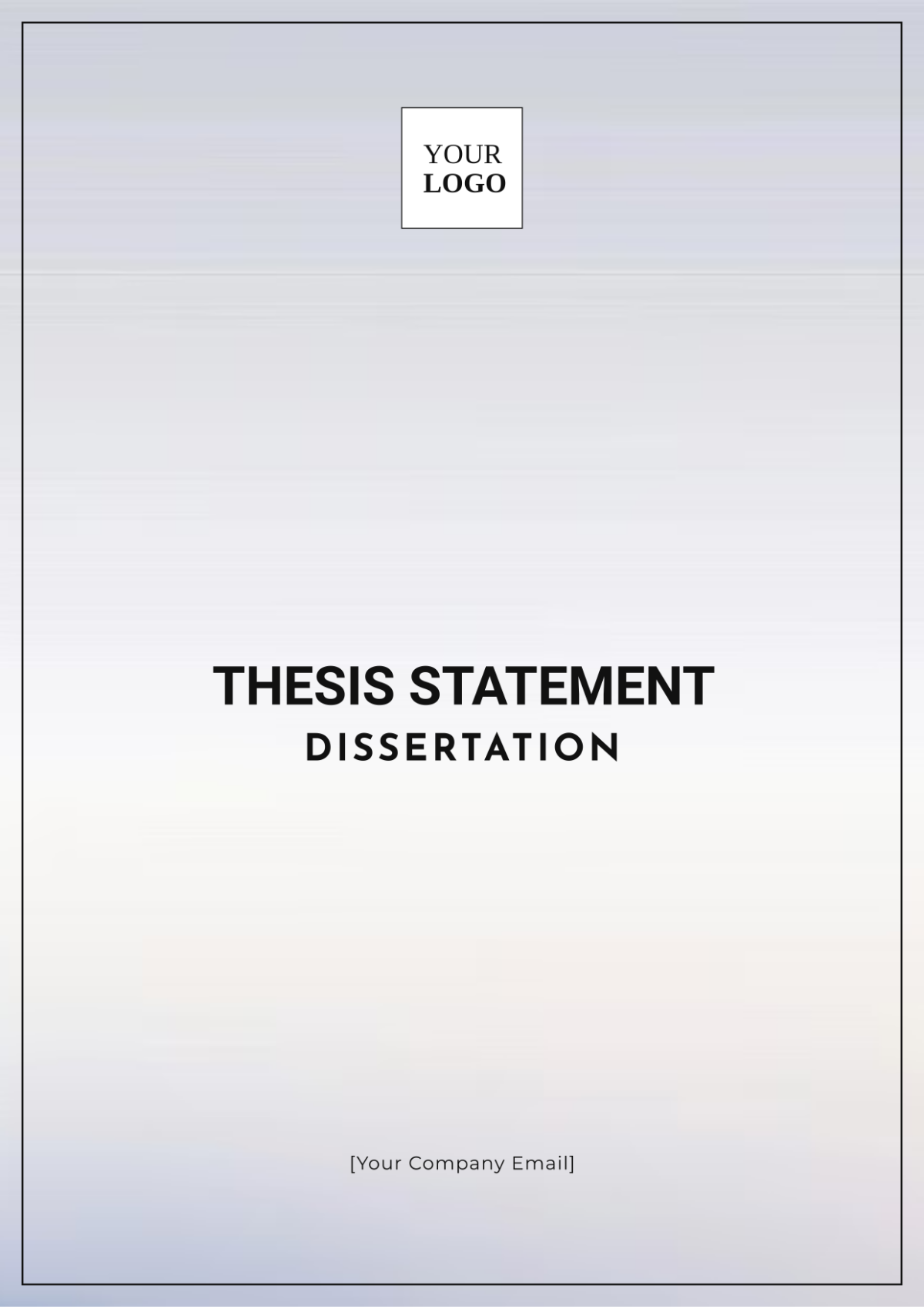Free Statement for Literary Analysis Template
Statement for Literary Analysis
Prepared By: [Your Name]
Date: [Date]
Introduction
A Statement for Literary Analysis is a focused assertion that provides an interpretation or evaluation of a literary work, addressing specific aspects such as themes, character development, or literary techniques. This analysis explores how Emily Brontë’s "Wuthering Heights" uses the theme of isolation to deepen the narrative and character development. By examining both physical and psychological aspects of isolation, this statement highlights how Brontë’s portrayal of isolation shapes the novel’s exploration of love, revenge, and identity.
Analysis
Physical Isolation
Physical isolation in "Wuthering Heights" is exemplified by the novel’s setting and its impact on characters. The moorland setting itself is a symbol of isolation, representing the emotional and social distance between characters.
Evidence:
Wuthering Heights is located on the bleak Yorkshire moors, a remote and inhospitable environment that mirrors the isolation felt by the characters.
Thrushcross Grange, in contrast, is depicted as a more civilized and genteel setting, yet it is still isolated from the outside world by its physical barriers.
Impact on Characters:
Heathcliff: His isolation is both a product of and a cause for his vengeful nature. Raised as an adopted member of the Earnshaw family, Heathcliff experiences emotional detachment and societal exclusion, which fuels his desire for revenge.
Catherine Earnshaw: Her psychological isolation stems from her internal conflict and societal expectations. The moors symbolize her desire for freedom and her struggle to reconcile her love for Heathcliff with her social ambitions.
Psychological Isolation
Psychological isolation is a recurring theme that influences the characters' interactions and motivations. Brontë delves into the inner lives of her characters, revealing how isolation affects their behavior and relationships.
Evidence:
Heathcliff's Revenge: Heathcliff's psychological isolation drives his revenge against those who wronged him. His bitterness and solitude lead him to inflict suffering on others as a means of asserting control and seeking retribution.
Catherine's Duality: Catherine's internal conflict between her love for Heathcliff and her desire for social advancement creates a profound sense of psychological isolation. Her struggle is evident in her emotional outbursts and erratic behavior, particularly her famous declaration, “I am Heathcliff.”
The table below summarizes how different aspects of isolation are portrayed and their impact on the characters:
Character | Type of Isolation | Evidence from the Text | Impact on Character |
|---|---|---|---|
Heathcliff | Physical & Psychological | Raised as an outsider, lives in a remote location, driven by revenge | Develops a vengeful and manipulative personality |
Catherine Earnshaw | Psychological | Struggles between love for Heathcliff and societal expectations | Experiences emotional turmoil and erratic behavior |
Emily Brontë's Writing Style | Psychological & Physical | Descriptions of the moors and characters' emotional states | Enhances the theme of isolation and its consequences |
Conclusion
Emily Brontë’s "Wuthering Heights" masterfully explores the theme of isolation through both physical settings and psychological landscapes. The novel’s portrayal of isolation serves as a lens through which the characters’ motivations, actions, and emotional states are examined. By intertwining physical and psychological aspects of isolation, Brontë not only enhances the novel’s dramatic tension but also provides a profound commentary on the human condition. This analysis underscores how isolation is central to understanding the complexities of "Wuthering Heights" and its characters.
